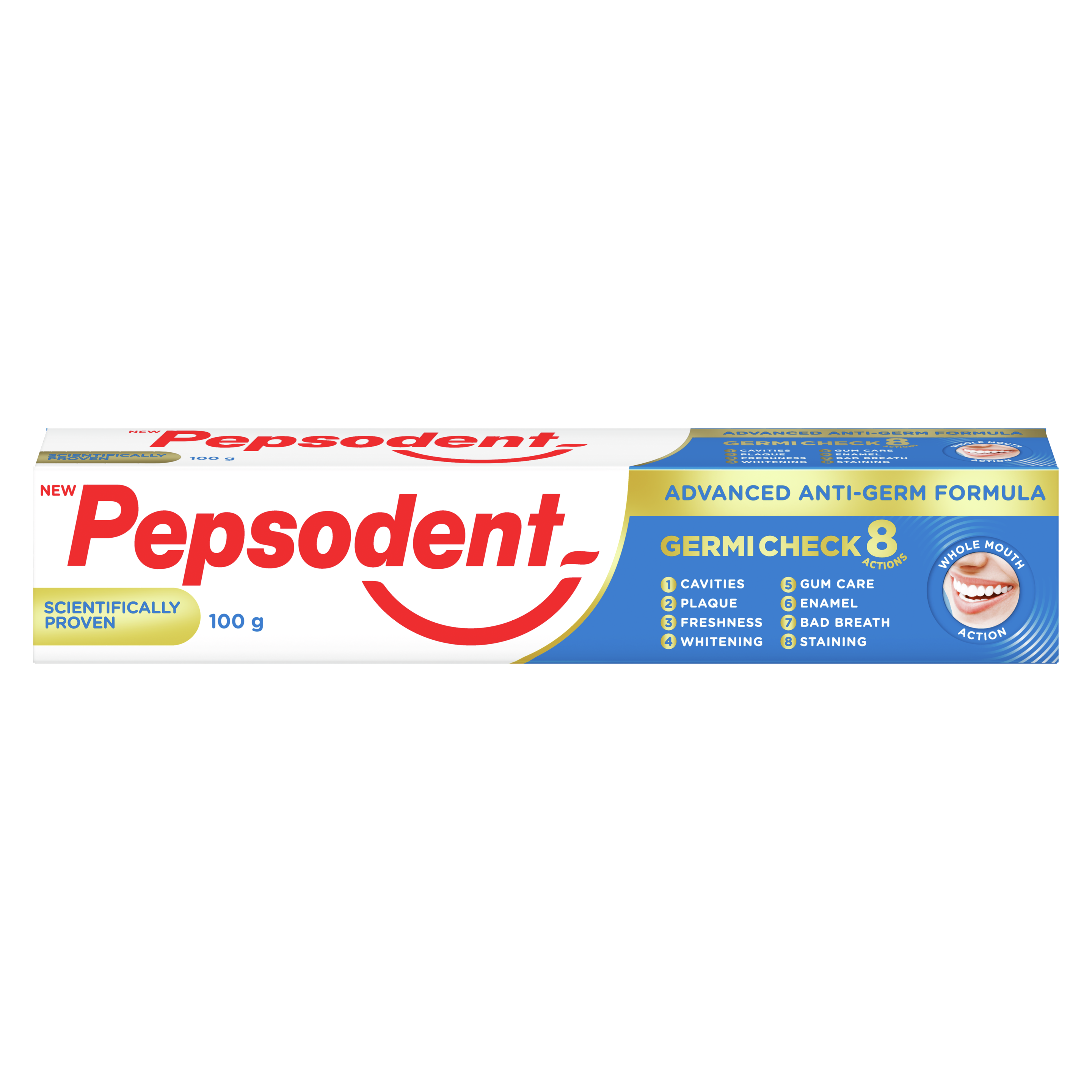Skip to:
What are the signs and symptoms of gum disease?
- Inflamed gums
- Bleeding gums
- Receding gums
- Bad breath
- Loose teeth
If you have any of these symptoms, you should book an appointment with your dentist. In the meantime, there’s plenty you can do yourself to look after your irritated gums.
Improve your oral health routine
Gum disease is mostly caused by inadequate brushing and flossing. So if your teeth cleaning routine has been a little hurried recently, it’s time to make some adjustments. Brush your teeth at least twice a day using a toothbrush with soft bristles.
For daily maintenance, we recommend using the new Pepsodent Germicheck 8, a fluoride toothpaste which contains CPC, clove and neem oil, and helps to strengthen your gums. Germicheck 8 fights germs not only on teeth, but also on the tongue, cheeks, and gums to give you whole mouth protection and 8 scientifically proven benefits.
Since food can often get stuck between the teeth, it’s also essential to floss at least once every day. Make sure you get the floss right up between the gum and each tooth.
Enjoy a gum-friendly diet
Your diet has more of an impact on your gum health than you might think. Nutrient-rich foods such as vegetables and wholefoods nourish your gums, helping them stay strong and healthy.
Pepsodent recommends
It contains an advanced anti-germ formula with CPC technology, clove and neem oil that fights germs not only on your teeth, but on other parts of the mouth as well – your tongue, cheeks, and gums, to give you 8 scientifically proven benefits for the whole mouth.
1. Cavity protection
2. Removal of plaque
3. Fights bad breath
4. Healthy gums
5. White Teeth
6. Gives Fresh breath
7. Protects the Enamel
8. Protects teeth from staining
- slide 1
Give up smoking
You already know smoking is bad for your lungs, but did you know it’s also bad for your gums? Scientists agree that smoking prevents your gums from receiving essential nutrients, making them more vulnerable to the inflammation that leads to gum disease.
We understand that it’s hard to quit, but it’s one of the best things you could ever do for your health – your gums included.
So, listen to what your toothbrush is telling you. If you spot blood, take charge of your oral care routine, and brush, floss, rinse and repeat for healthier, more confident smiles.





